Quilting is a craft passed down through generations. It’s a cosy blend of art and history; every stitch tells a story. It’s a timeless tradition that combines creativity with practicality, resulting in beautiful patterns that have stood the test of time.
Whether you’re a seasoned quilter or picking up needlework for the first time, we’ve curated a list of 20 traditional quilt patterns that will inspire your next quilting project.
Contents [show]
A Brief History of Quilts
Believe it or not, quilts have been around for centuries – a craft cherished across many cultures around the globe.
The word ‘Quilt’ originates from the Latin word ‘Culcita’, meaning a stuffed sack, but quilting as we know it really started to take shape in the Middle Ages.
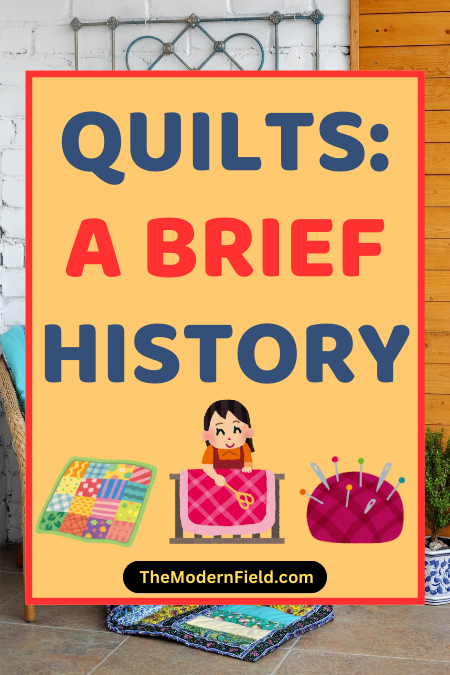
Back in those days, quilts were mostly about keeping people warm or adding extra padding under their armour. But by the 1700s, quilting gained popularity in Europe and America.
Early American settlers brought their quilting know-how with them, and soon enough, “quilting bees” became a thing.
Women would get together to work on quilts, share stories and tips, and enjoy each other’s company. It was a way to bond and make something beautiful and useful.
By the 19th century, quilts were a must-have in every American home. Commoners would often use leftover fabric scraps and old clothes to make them, which shows how resourceful people were back then.
Over time, different regions developed their signature styles, with each quilt telling a unique story about the ones who made it.
Even during hard times, like the Great Depression, quilting stuck around as a way for poor families to make the most of what they had. And guess what – quilting has been a favourite pastime ever since!
Today, quilting can be a hobby or even an art form – displayed proudly in homes and museums.
Whether you’re making a quilt to keep you cozy, for a special occasion, or just for the fun of it, you’re carrying on a tradition that connects us to history and lets us be as creative as we want in all sorts of ways.
Next time you see a quilt, take a moment to appreciate the history and love that went into each stitch!
20 Traditional Quilt Patterns You’ll Love
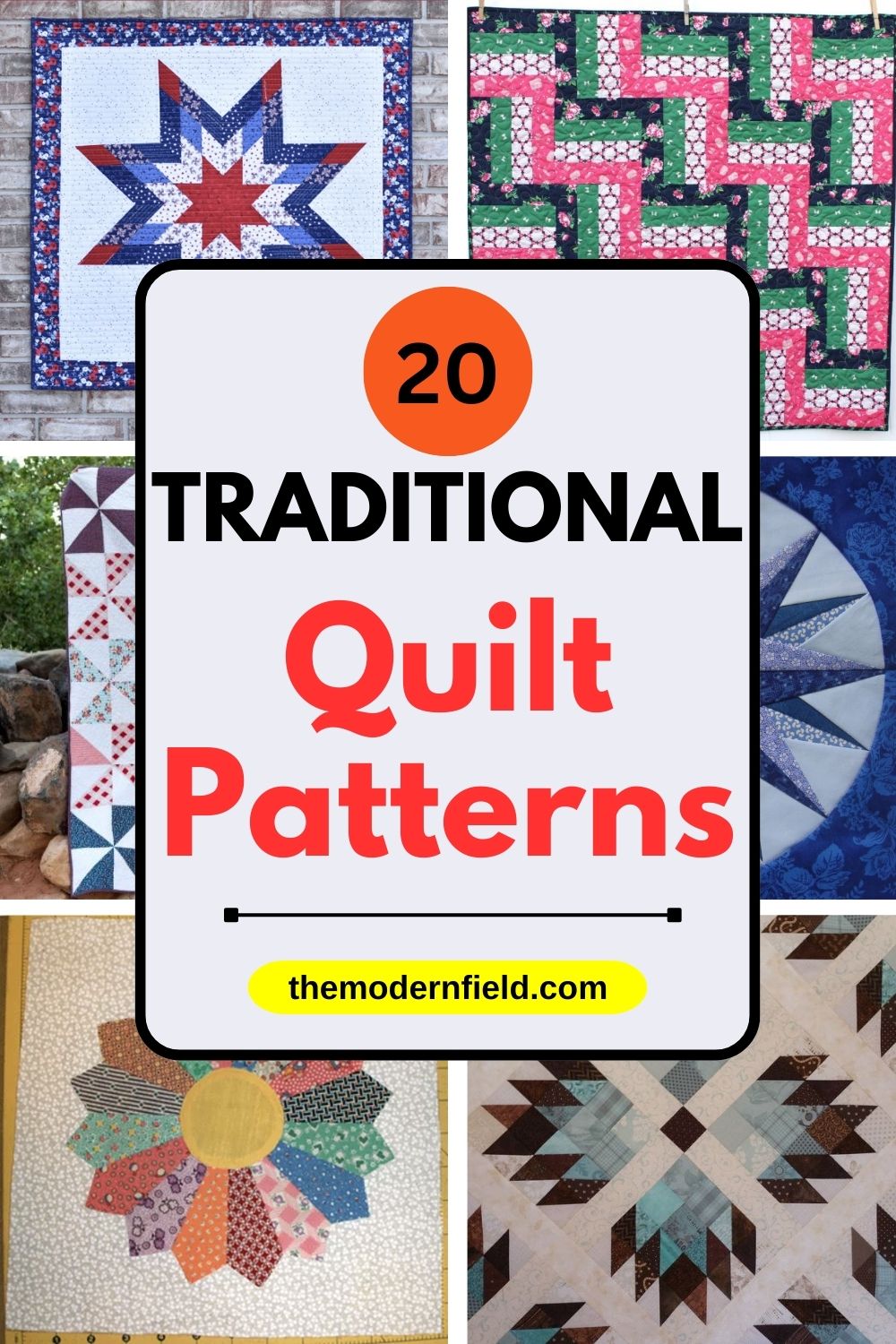
We all have had that itch to stitch something classic, but sometimes, inspiration can be as elusive as a runaway spool of thread.
Give your sewing machine a kickstart with these quilt patterns that have been around for ages and are as timeless as they are gorgeous.
1. Log Cabin
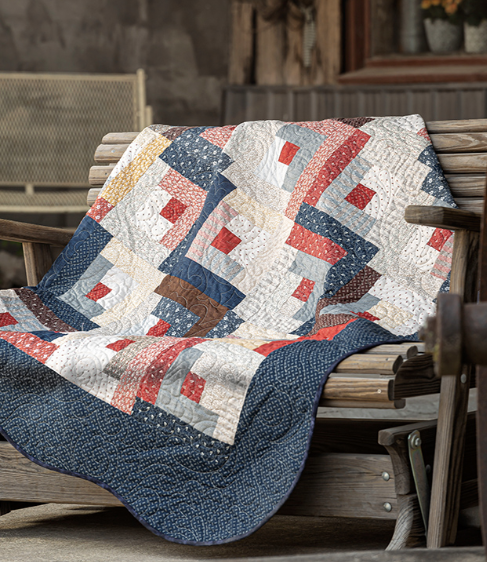
Picture a cosy log cabin in the woods. It’s a classic design that represents the home, with a central square symbolising the hearth and strips around it representing the snug walls.
This versatile, timeless pattern can be arranged in countless ways, making each quilt unique.
2. Bear Paw
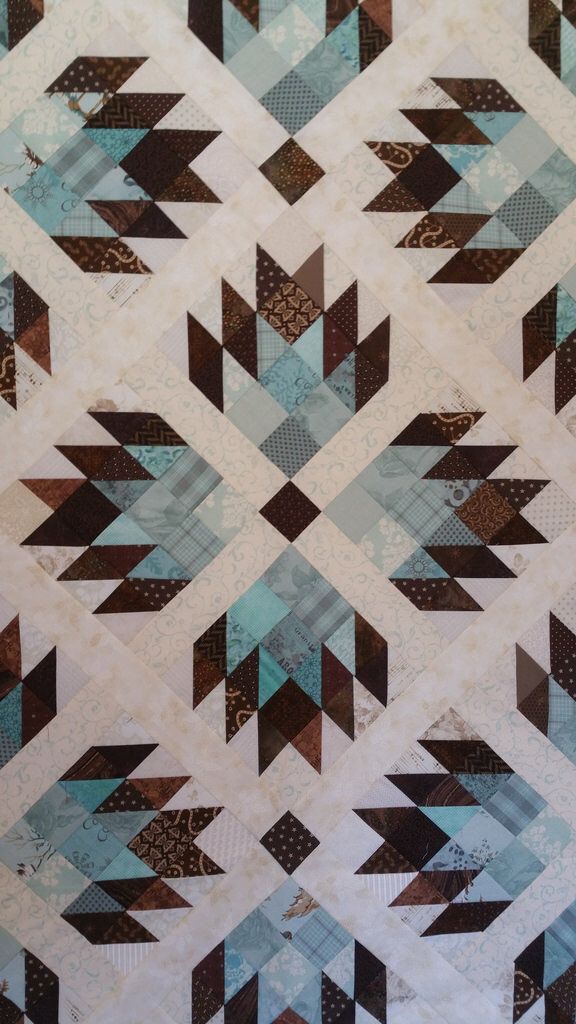
Ever wonder what a bear steps on? Resembling the paw prints of a bear, this pattern is a nod to nature and the wilderness.
Often featuring earthly tones or bold colours to mimic the wild, it’s a fun way to bring a touch of the wild outdoors to your throws, wall hangings, and table toppers.
3. Double Wedding Ring

Looking for a romantic quilt?
This one’s a winner!
Interlocking rings symbolise love and commitment, making this pattern a perfect choice to celebrate a couple’s special bond. Imagine how stunning it would look as a wedding or anniversary gift!
4. Dresden Plate
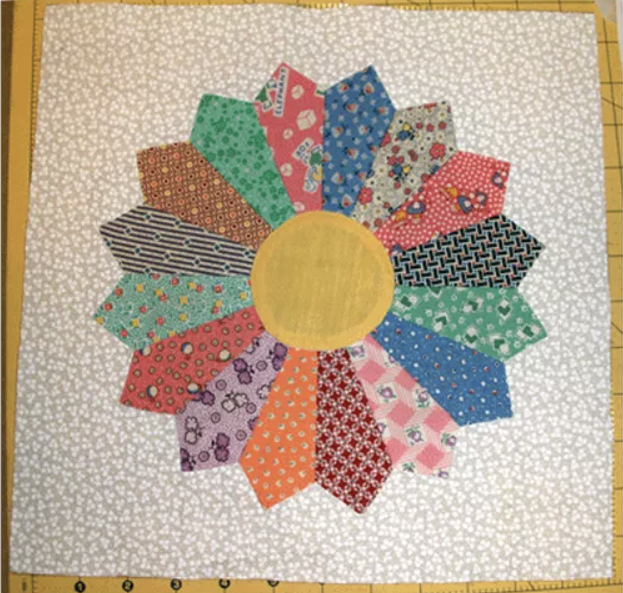
Picture a gorgeous blooming flower.
This pattern features a floral design that radiates from the centre, often using various fabric scraps for a vibrant look.
It’s great for showcasing those vibrant, cheerful fabrics you’ve been saving up for so long!
If you love flower quilts, be sure to check out our curated list of 16 stunning flower quilt patterns for even more ideas!
5. Grandmother’s Flower Garden
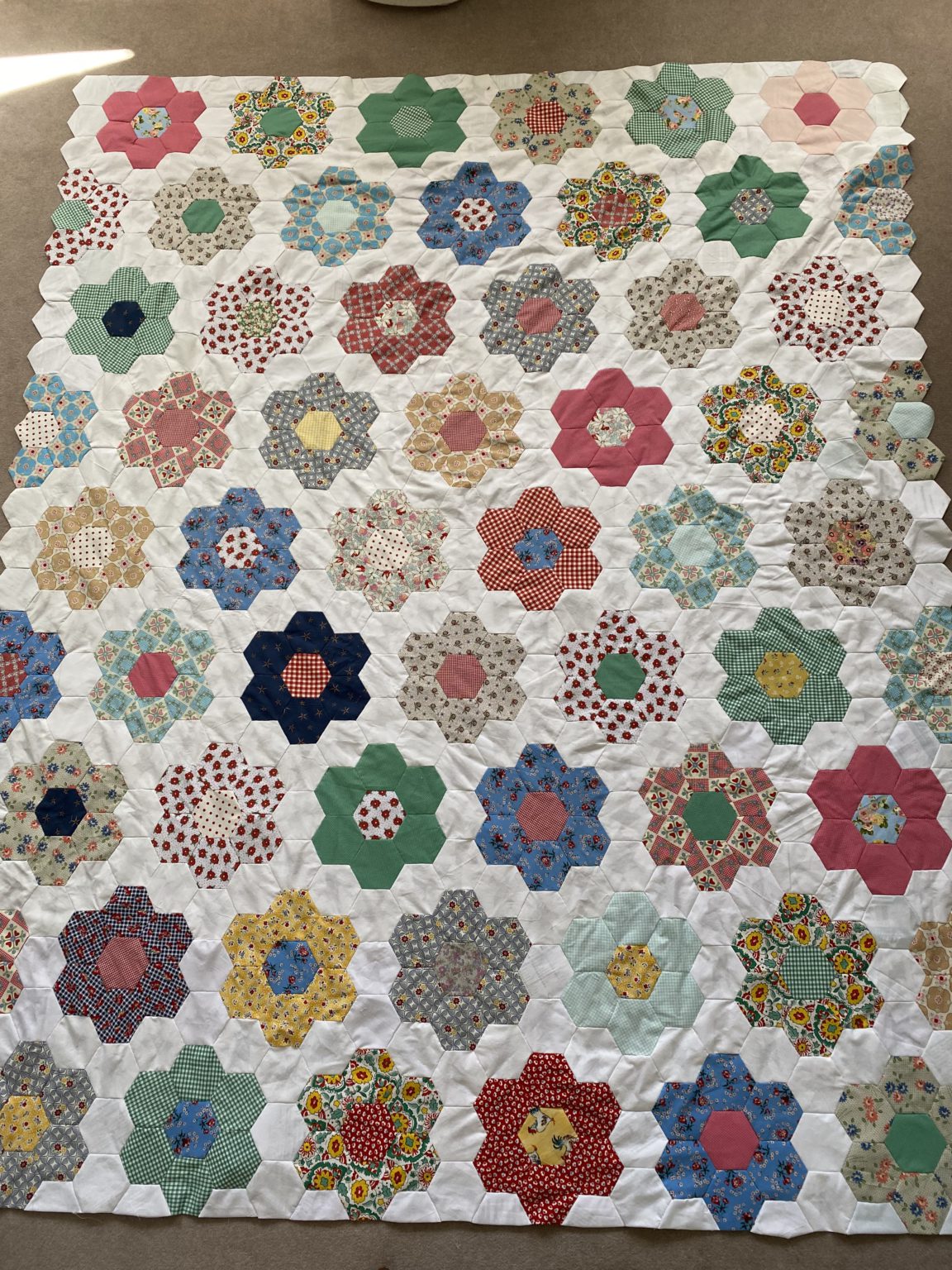
Hexagons pieced together to resemble a charming flower garden.
Use up those small fabric scraps to create this delightful patchwork – a little slice of floral paradise!
6. Pinwheel
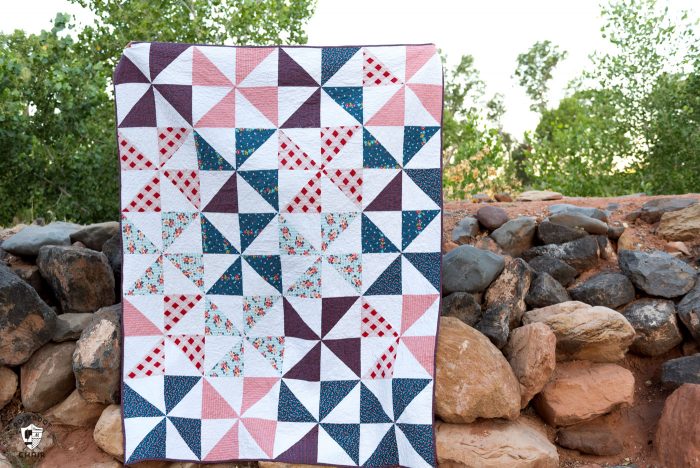
Simple and playful, this pattern uses triangles to create the illusion of spinning motion. The sense of movement it offers makes this design ideal for children’s quilts.
Speaking of, here’s whole another list of 30 top baby quilt patterns you can stitch up for the little ones in your household!
7. Ohio Star
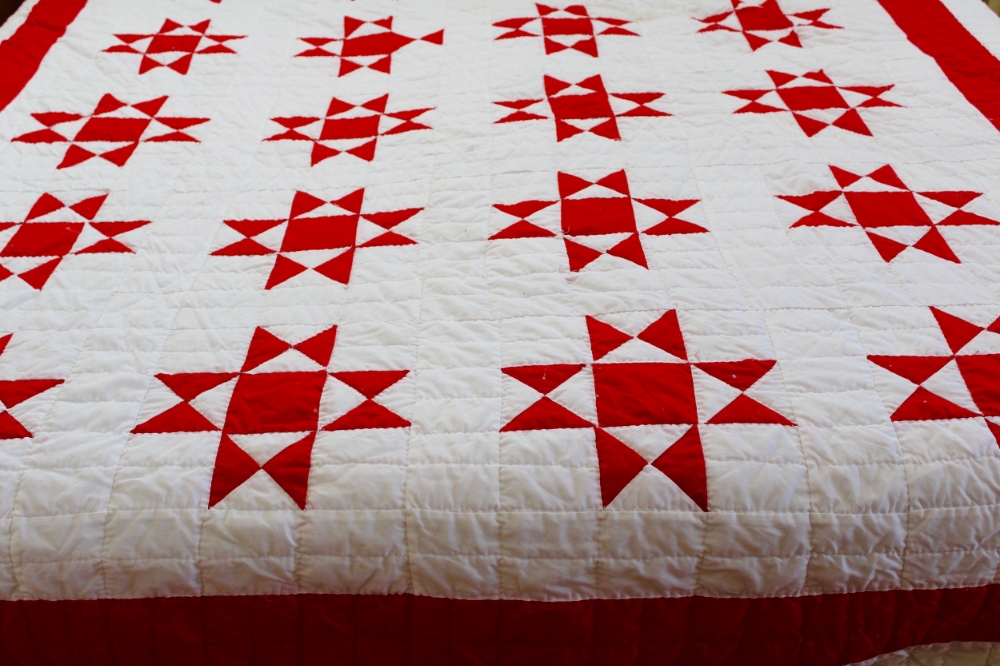
A block with a star at its centre, surrounded by squares and triangles, representing the night sky.
This traditional pattern is a favourite among quilters for its striking geometric design and its ability to look both classy and modern, depending on fabric choices.
8. Mariner’s Compass

Pointed stars and circular shapes evoke the navigational instrument used by sailors.
This intricate pattern is perfect for those who love a challenge, creating a stunning, detailed focal point for any quilt.
9. Lone Star

A large, multicoloured star that stands out as the centrepiece of the quilt.
The Lone Star pattern is bold and eye-catching, and you can use a range of colours and textures to create a radiant, starburst effect that draws the eye.
Star quilts are in abundance, so if you’re looking for further inspiration for your next quilts, here are our picks to 25 star quilt patterns to light up your space!
10. Storm at Sea

Feeling adventurous? This pattern isn’t for the faint of heart!
The clever placement of squares and diamonds mimics the dynamic look of rolling waves, making it a captivating, intricate design for experienced quilters.
11. Basket

Weaved strips form a basket shape, often filled with floral designs.
This charming pattern adds a cosy, homey feel to any quilt, and the baskets can be personalised with different fabric choices to represent various flowers or even seasonal themes.
12. Churn Dash

A simple geometric pattern that resembles a butter churn, reflecting the pioneer days.
It’s easy to piece together and ideal for making your quilt appear rather rustic.
13. Sunbonnet Sue

A character appliqué that features a bonneted girl, often engaged in everyday activities.
Sunbonnet Sue brings a nostalgic, whimsical touch to quilts, capturing scenes of daily life in a playful, endearing way.
14. Irish Chain
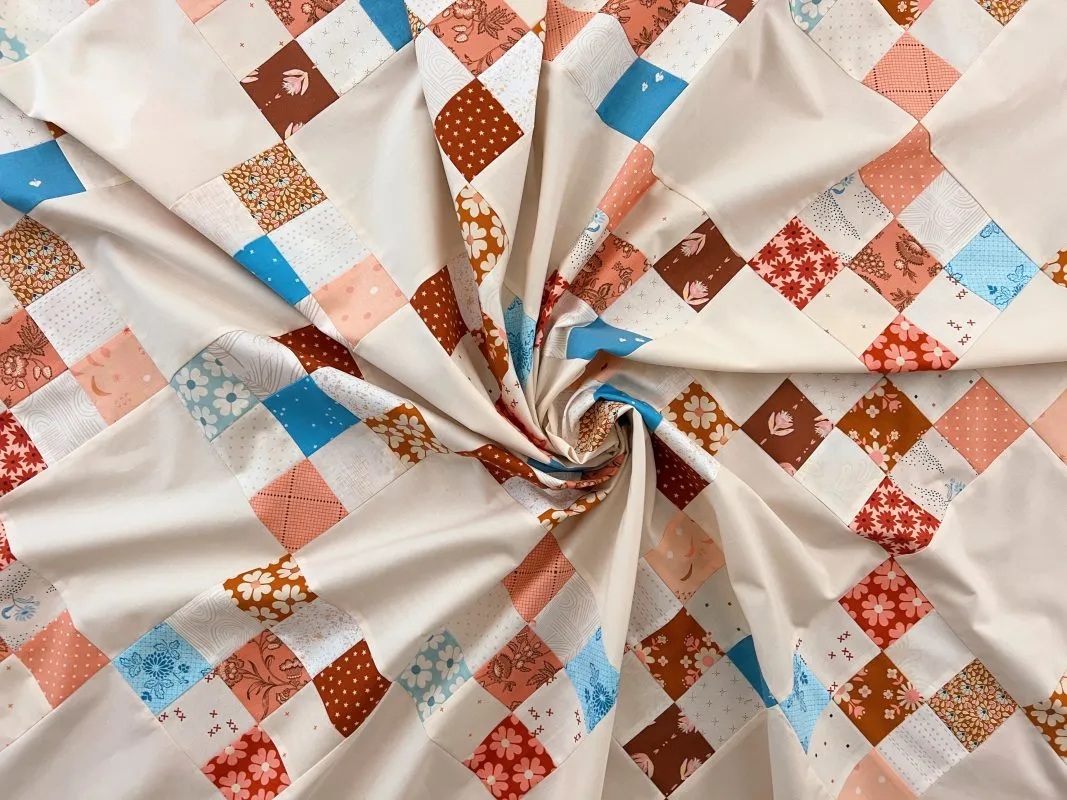
Diagonal lines form chains across the quilt, a pattern that can range from simple to intricate. The Irish Chain is versatile, allowing for endless colour variations.
Plus, it creates a stunning visual effect with its interlocking chains.
15. Orange Peel
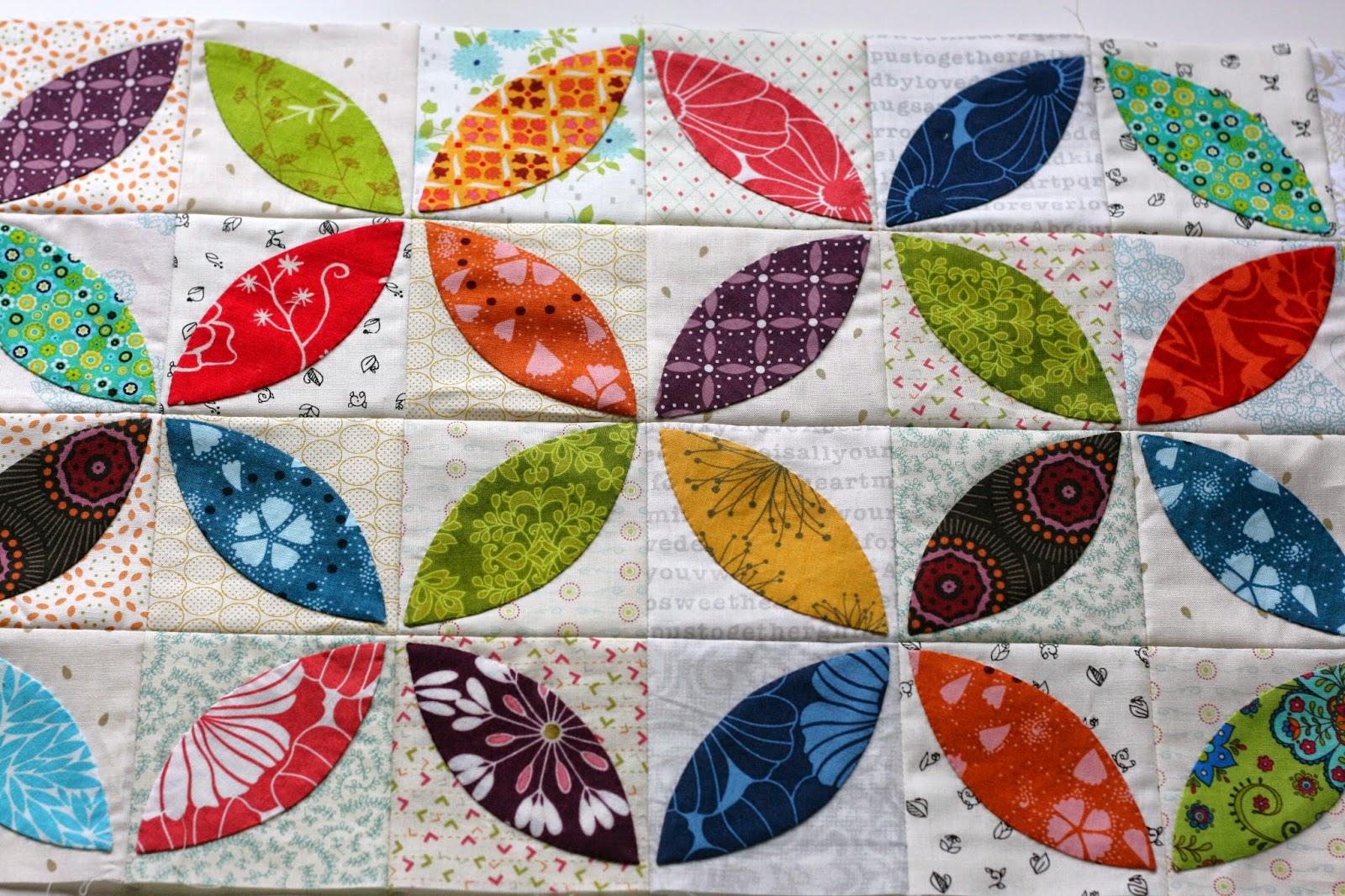
Interlocking shapes that resemble the peel of an orange, often set against a contrasting background.
With its balanced symmetry and graceful curves, this elegant pattern will make for a sophisticated wall hanging.
16. Tumbling Blocks
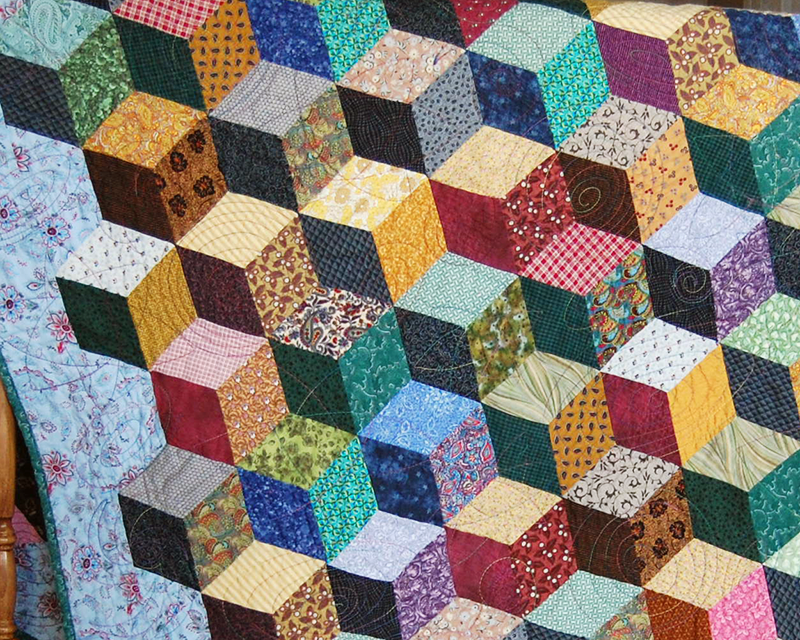
Three-dimensional cubes that appear to tumble across the quilt surface.
The Tumbling Blocks pattern is a quilter’s favourite for its optical illusion effect, adding busyness to the quilts without overwhelming the eyes.
17. Drunkard’s Path
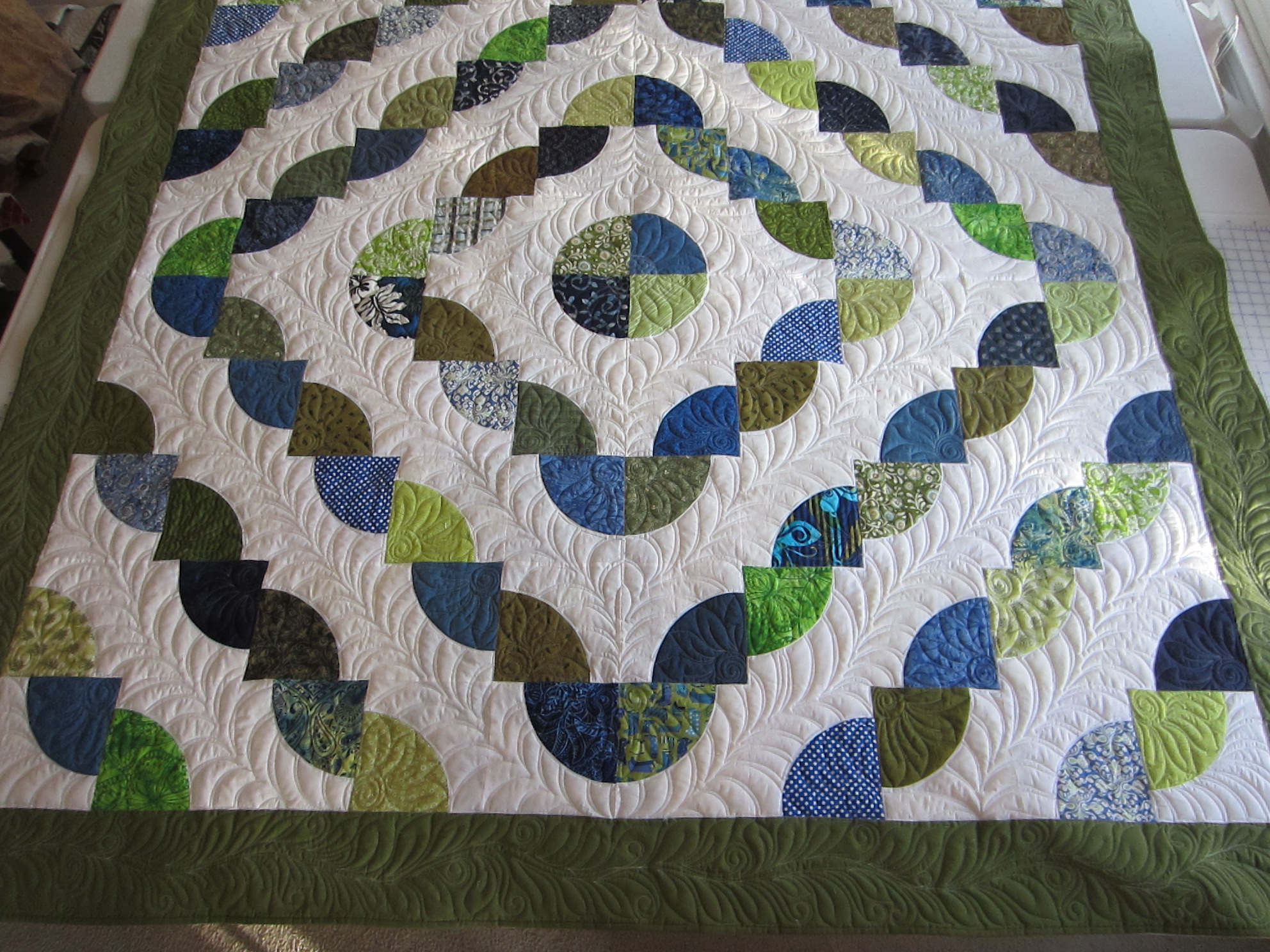
Curved piecing creates a sense of movement, with a name that hints at a meandering journey. Again, you can arrange the pattern in countless ways, each layout telling a different story.
18. Baltimore Album
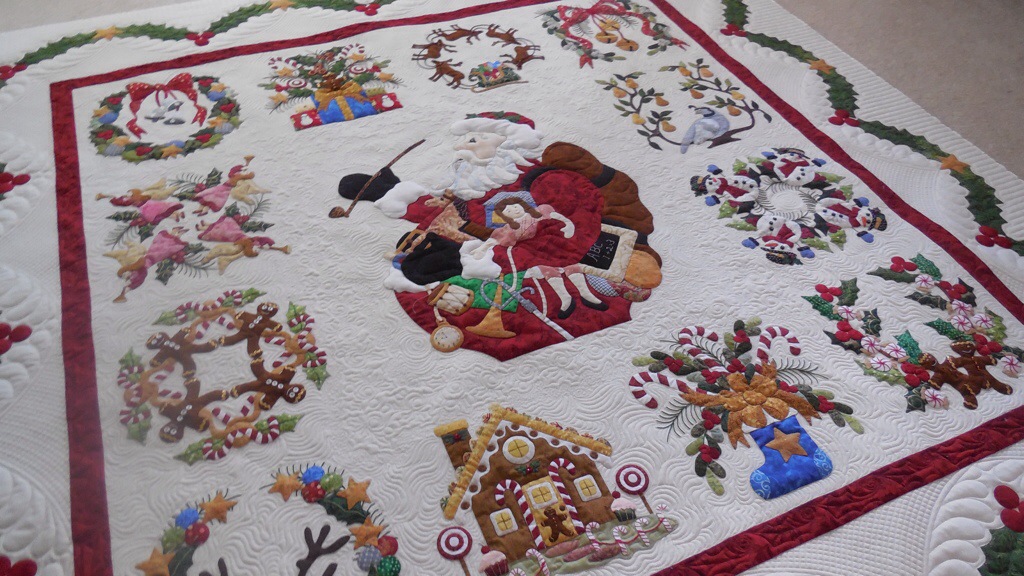
Baltimore Album quilts are known for their detailed, intricate designs, making each quilt a work of art that captures personal and historical narratives.
The appliquéd blocks each tell a story, often with floral, animal, or traditional motifs.
19. Rail Fence

Strips of fabric are arranged to resemble a wooden rail fence, often in a zigzag pattern.
It’s straightforward and allows for practically infinite colour combinations, achieving a striking graphic effect.
20. Flying Geese
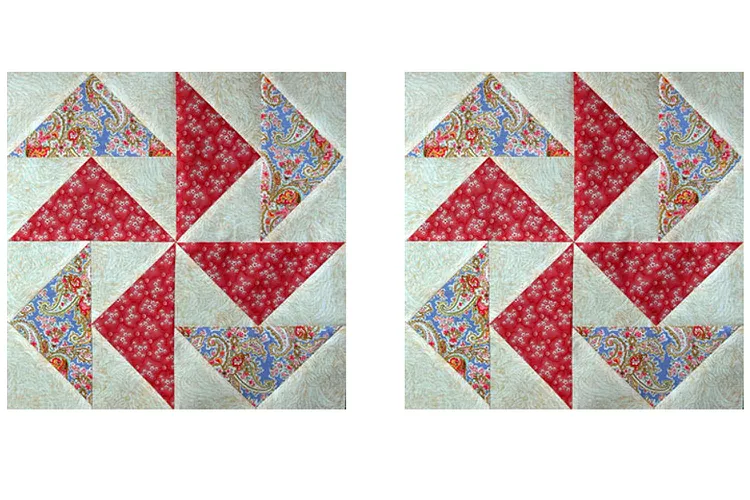
Triangles in formation, symbolising migratory birds in flight and the change of seasons.
With its clear lines and timeless appeal, the Flying Geese is just about the best traditional pattern you can work on to add a sense of direction and movement to your next quilting project.
We’ve covered 20 of the best Flying Geese quilt patterns in a separate post for those looking for inspiration.
Tips to Successfully Sew a Traditional Quilt
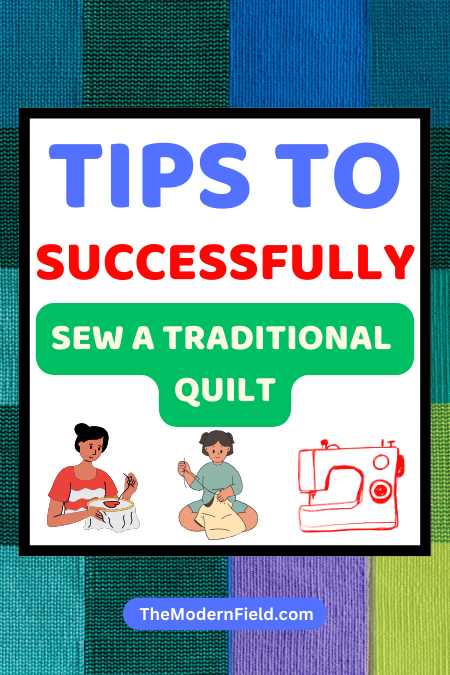
Finding the perfect pattern is the first step to quilting bliss, isn’t it?
Consider your skill level first. If you’re a beginner, something like a “Churn Dash” with its simple squares and triangles is a great choice. More advanced quilters can tackle intricate designs like the “Drunkard’s Path” or “Baltimore Album” with confidence.
Think about how much time you can dedicate. The “Storm at Sea” might be stunning, but it requires more piecing than a “Log Cabin”, something one can easily finish on a lazy Sunday afternoon.
The purpose of your quilt matters too. Quilts for yourself can be any style you love. But if it’s a gift, consider the recipient’s taste. A quilt with the “Sunbonnet Sue” pattern might be ideal for a grandma who loves vintage charm.
Now, let’s talk about sewing like a pro! Accurate cutting is key to crisp piecing. We always advocate for investing in a good rotary cutter and mat – they’ll be your best friends.
Fabric selection is equally important. Choose quilting cottons of similar weights and weaves to avoid puckering or uneven seams. Don’t forget to pre-wash your fabrics to prevent shrinkage later, though depending on where you’re buying it from, it may not be necessary.
Once you’ve sewn your pieces together, pressing is essential. It flattens the seams and makes everything nice and crisp. Use an iron set for cotton and press seams open for best results.
The beauty of traditional patterns is the endless customisability. Don’t fret to experiment with colour palettes. A “Lone Star” in bright, modern colours can be a real showstopper, but you may also go for a monochromatic look.
Borders can add a beautiful finishing touch. It can be a simple strip of fabric or a more elaborate design. Furthermore, you can embellish your quilt with appliqué shapes like flowers, animals, or even letters for a personal touch.
With all this in mind then, we hope you’ll create a traditional quilt that’s uniquely yours!
Pin For Later
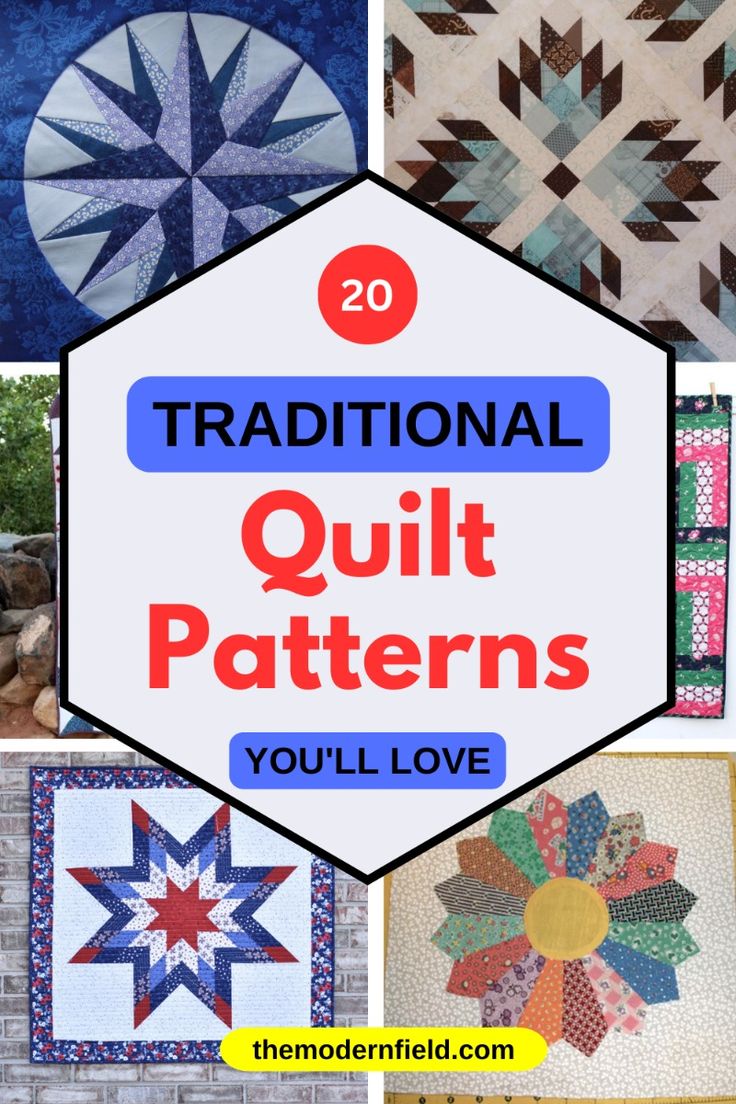
Clear Your Doubts (FAQ)
What’s the best fabric to use for traditional quilts?
Quilting cotton is the go-to fabric for most traditional quilts. It’s durable, easy to work with, and comes in endless colours and patterns. That said, feel free to use fabric scraps from old clothes or previous sewing projects!
How much fabric do I need?
Most patterns will provide a fabric requirements list. But a good rule of thumb is to buy a little extra, especially if you’re a beginner and aren’t sure about your cutting skills.
Having extra fabric in hand will give you wiggle room for any last-minute changes and allow for experimenting with borders or other design elements.
My quilt top is finished, now what?
Time for the fun part – the quilting! This involves stitching through all three layers, i.e., top, batting, and backing, for a finished quilt. There are many different stitching patterns to choose from, or you can keep it simple with straight lines.
My finished quilt isn’t as flat as I’d hoped. Any tips?
Lay it out on a flat surface and gently tug or stretch any uneven areas. You can also try pinning it down and letting it relax for a while. If that doesn’t work, give it a gentle steam to help the fabric settle.
What if I mess up?
Happens to the best of us! The beauty of quilting is that mistakes can often be fixed. A seam ripper comes in handy for taking out stitches.
And if you cut a piece the wrong size, don’t throw it away. You can sometimes adjust the pattern or use the leftover fabric for another scrappy project.
Can I quilt by hand instead of using a machine?
Many quilters enjoy the meditative process of hand stitching. But of course, it’s more time-consuming than machine quilting.
It’s worth noting that you don’t need a fancy sewing machine to get started. Any basic machine with a straight stitch will do the trick.
As you get more into quilting, you might want to explore machines with features like a walking foot or a free-motion quilting foot, which can make certain techniques easier.
How do I wash my finished quilt?
If made from cotton, use cold water on a gentle cycle with mild detergent. Avoid using bleach or harsh chemicals, and always check the care labels on your fabrics for specific instructions.
Where can I find more inspiration?
Check out our Quilt section – your gateway to tons of FREE patterns and ideas. Local quilt shops often have classes and workshops, and there are online communities where you can connect with other quilters and share your progress.
Save This Page to Your Pinterest Board!
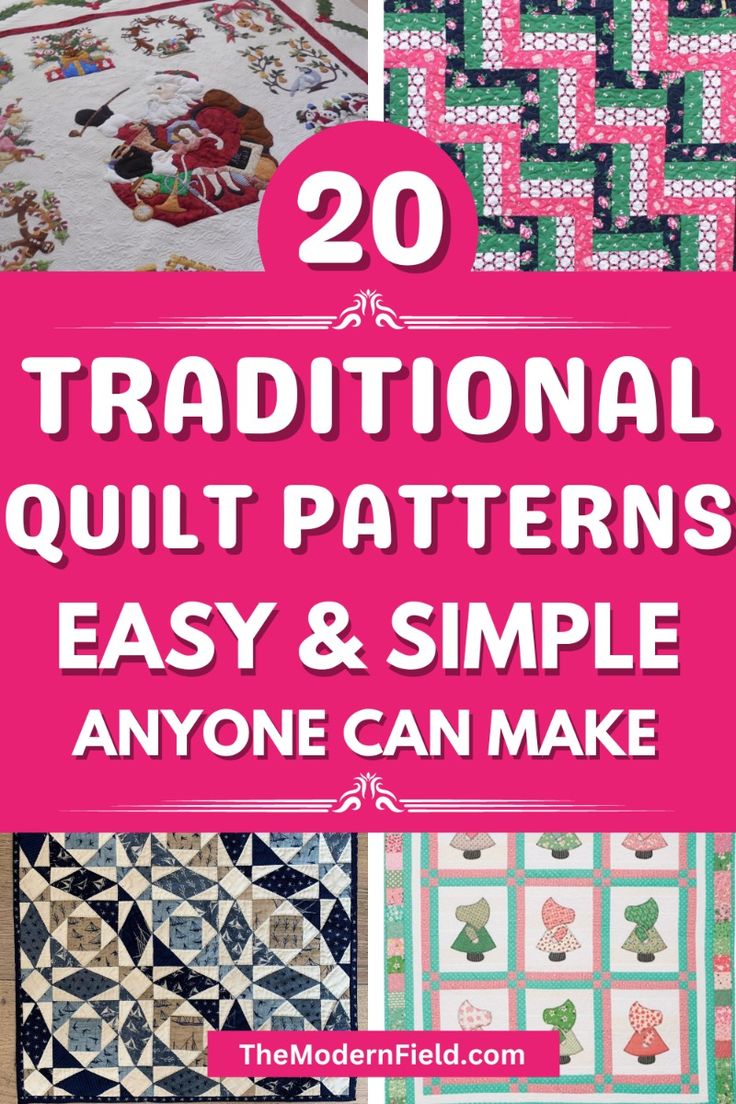
Thread Lightly
Whether you’re a veteran quilter or just dipping your toes into the craft, these 20 traditional quilt patterns offer a wonderful starting point for your next project.
These patterns aren’t just for quilts; you can adapt them for table runners, wall hangings, and more. Each one carries a story and a beauty both ancient and ever-new. All it needs is your personal touch!